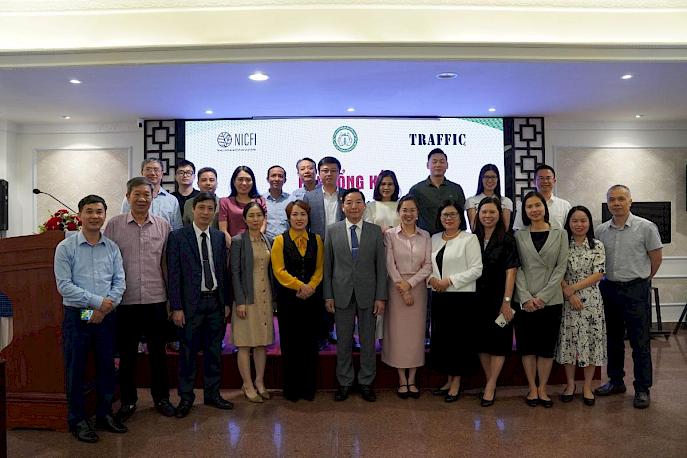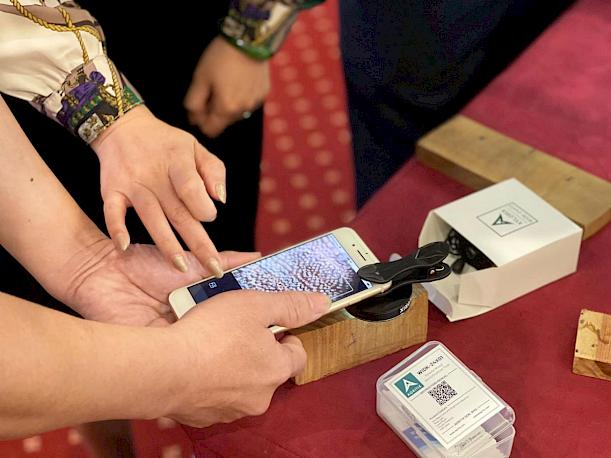On 20 November 2025 in Ho Chi Minh City, TRAFFIC and the Vietnam Forestry Administration (VNFOREST) marked the successful completion of a five-year effort to help protect the Congo Basin rainforest — one of the world’s most important forest ecosystems.
The project brought together partners in Cameroon, the Republic of Congo, Vietnam and China to strengthen how timber is tracked and verified along its entire journey, from African forests to Asian factories.
At the closing event, 30 representatives from government, timber industry associations, research institutes, and civil society came together to reflect on Vietnam’s progress and agree on next steps to ensure the timber entering the country is legal, sustainable, and responsibly sourced.

Achievements and results for Vietnam
 In Vietnam, the initiative primarily aimed to build on-the-ground expertise, training more than 300 forest rangers and customs officers across 47 provinces to identify illegal timber, understand sustainable forestry practices, and enforce Vietnamese and international timber laws.
In Vietnam, the initiative primarily aimed to build on-the-ground expertise, training more than 300 forest rangers and customs officers across 47 provinces to identify illegal timber, understand sustainable forestry practices, and enforce Vietnamese and international timber laws.
Smart technology was also introduced by equipping customs officials with Xylorix Enforcer: a smartphone app that quickly identifies wood species in the field, making it harder for illegal timber to pass undetected through Vietnam’s borders.
These efforts created a nationwide network of trained inspectors, who now provide consistent screening across Vietnam’s entry points, significantly reducing illegal timber in the country’s manufacturing supply chain.
At the same time, the initiative promoted industry accountability by bringing together 100 timber companies to develop a voluntary Code of Conduct, a shared commitment to sourcing legal, sustainable wood, and keeping supply chains transparent.
As a result, 78 companies that demonstrated compliance with the Code of Conduct now have easier access to buyers in Europe, North America, and other markets where legal sourcing is increasingly required, turning responsible practices into a competitive advantage.
Mr. Nguyen Van Dien from VNFOREST commented:
“We’ve given our frontline officers the skills to tell legal timber from illegal timber. This not only protects our global forests but also makes Vietnamese wood products more trustworthy to international buyers, especially in strictly regulated markets like the European Union.”,
Mr. Tran Le Huy, Vice Chairman of the Gia Lai Forest Product Association (formerly of Binh Dinh province), noted:
Proving the legal origin of wood is now essential for competing in global markets. This initiative gave our businesses the knowledge and systems we need to show international buyers that our products meet their standards.”
Next steps
Looking ahead, partners agreed to move toward a second phase of the project to continue strengthening the legal, sustainable timber trade and global forest protection.
Priorities include continuing to train enforcement officers as regulations evolve, exploring new partnerships, and extending responsible sourcing practices to other sectors, including online timber sales.
Chen Hin Keong, TRAFFIC’s Senior Advisor on Forest Governance and Trade, concluded:
This project has shown that government and businesses working together, both within Vietnam and across borders, is essential for sustainable timber trade and protecting forests at their source. By strengthening how we verify and track timber across borders, we’ve enhanced Vietnam’s reputation as a reliable supplier in international markets.”

